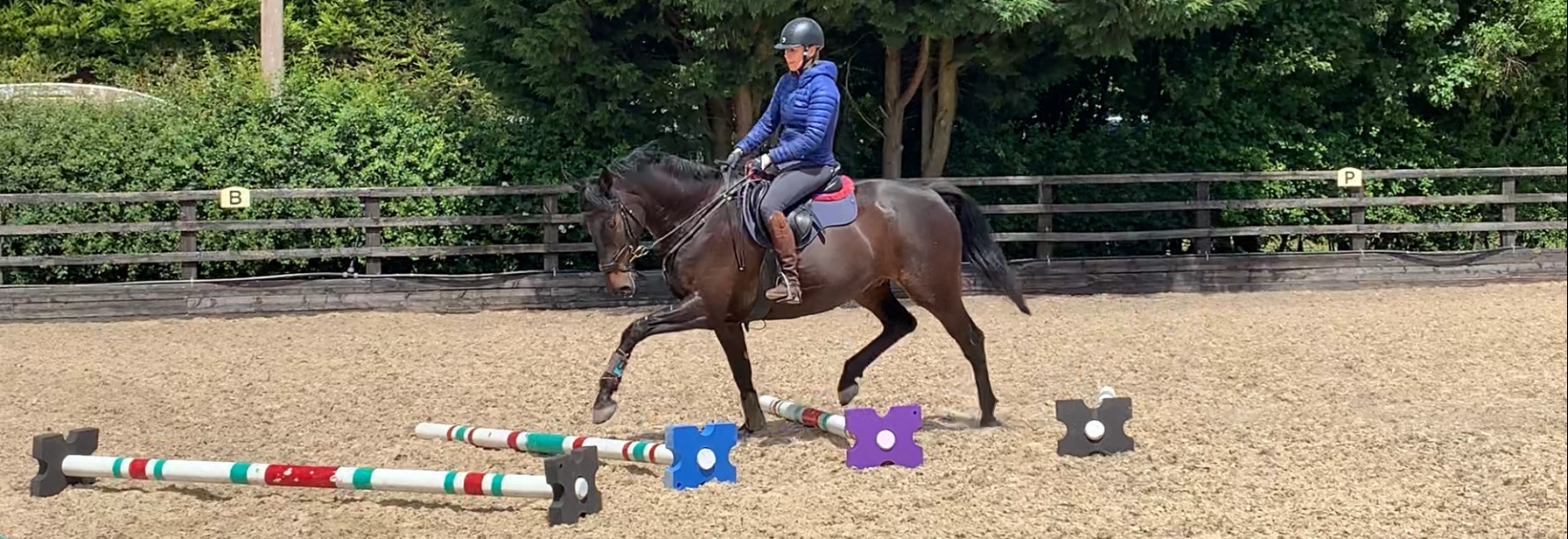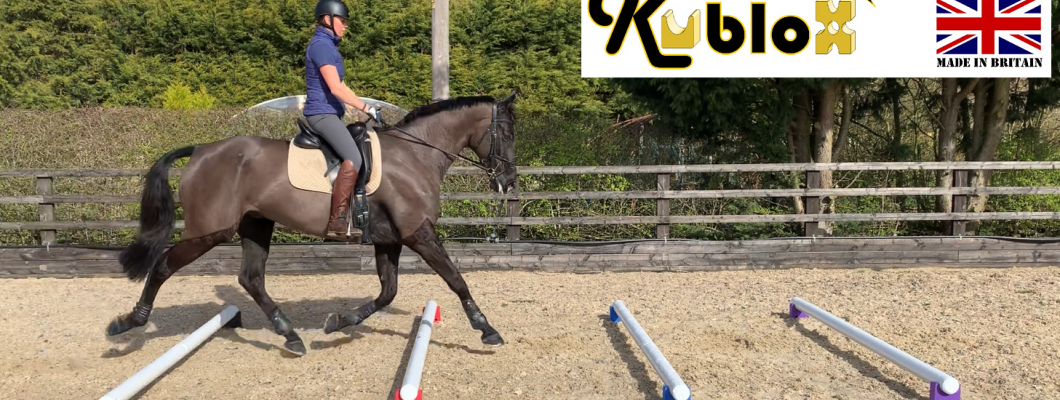
We've all heard the word "Cavaletti" on the horsey circuit ... and it seems to be getting more & more popular! But what does it actually mean nowadays? .. and should you be paying more attention & using them? Read on to find out what they are, how you can make them, what they can actually do for you (& your horse), along with some common pitfalls to avoid! ...
What are Cavaletti?
The word Cavaletti historically originates from the Italian for "little horse" and refers to the rather solid/ cumbersome wooden jumps, rigidly fixed into an X-frame at either end (see photo below). This frame structure could then be rotated to provide 3 pre-configured heights as illustrated by A, B & C in the diagram below.
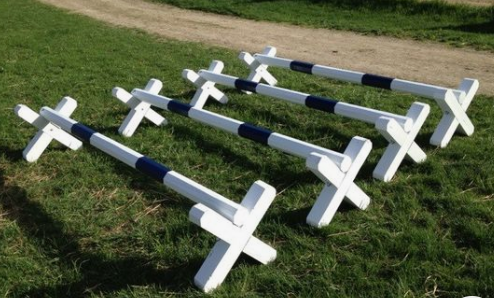
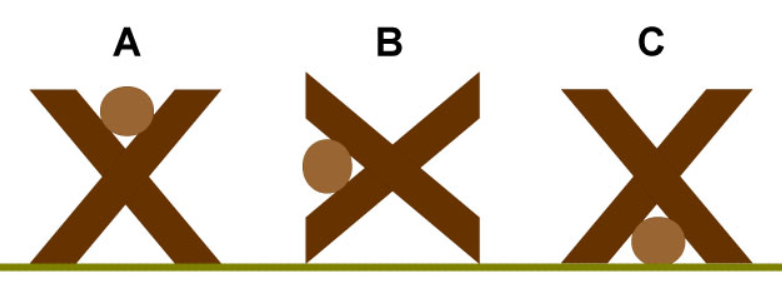
Designs, materials & concepts have changed a lot in recent years!
Nowadays the term "Cavaletti" can refer to any form of raised pole and is no longer specific to the wooden X-frame structure that it was historically.
Technically even a ground-pole can now be classified as a "Cavaletti"!!
How can I make a Cavaletti?
The easiest & most practical way to form a Cavaletti structure is to find a safe method of raising a standard wooden pole! Simple eh?... Why would you need anything more complicated than that?!
Chances are that you're already halfway there and you own a few show-jumping poles that can be re-assigned to ground-pole/Cavaletti duty! However if you don't already have a stash of poles to hand.. DON'T PANIC!... start by investing in 6-8 good quality wooden ones. If you contact your local sawmill you should be able to get these reasonably priced; to give you an idea of cost, I can buy "3m long, 100mm diameter, pressure treated machine round poles" for £11.28 each including VAT. All you have to do after that is decide which colour scheme you want to paint them in!!
Next you have to make the decision if you want to raise the poles & how high you would like them! There are a LOT of products on the market that can be used as a Pole-Raisers; so make sure that you do your homework before buying in order to make sure that you select the best one for you, your horse and the work that you want to do with them!
Things to consider when buying Pole-Raisers/Cavaletti are:
- Height - Many products will offer a range of height configurations.
- Safety - Is there any possible risk to you or your horse?
- Storage - Can they live outside without degrading?
- Robustness - Will they stand up to the abuse?
- Cost - Are they in your budget? What are the shipping costs like?
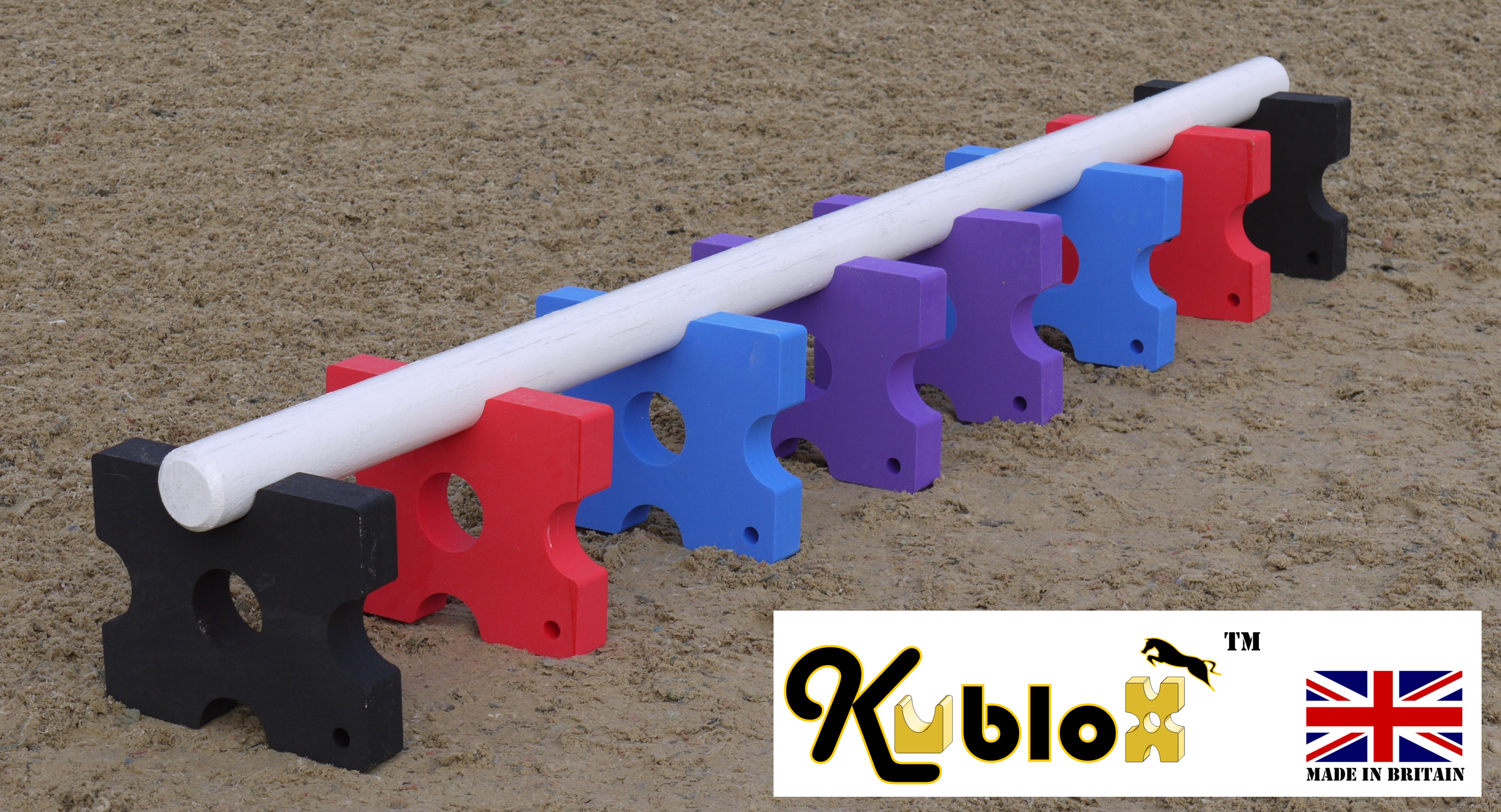
The majority of modern Pole-Raiser products are absolutely brilliant, however like everything in life, the good ones come with a bigger price-tag ! I'm obviously massively biased towards our KUBLOX™ products, so please do check out our Pop-Blox & Trot-Blox range as an excellent example of ultra-safe Cavaletti & Pole-Raisers.
Whichever product you decide to go with, one thing that I would like to urge everyone at this point, is to ensure that whatever you do use is "fit for purpose" and completely safe to use around horses.
Remember that every time you ask your horse to step over any obstacle you have a responsibility to both of you to do it safely!!
Watch the KUBLOX™-VIDEO below to see my top 10 things that you shouldn't use as Cavaletti! Some are perhaps more far-fetched than others:
Are Cavaletti & Pole-Exercises good for my horse?
Pole-work & Cavaletti can be used to improve not only the riders technique & accuracy, but also the horses confidence, suppleness, strength & obedience.
Correctly performed Pole-Work can be physically beneficial to horses of all disciplines, at all levels!! Here is a list of just a few of the main benefits:
- Improves balance & proprioception (ie "hoof to brain" coordination)
- Develops rhythm & energy
- Through use of a sequence of pre-designated stride patterns, it promotes symmetrical movement & instils a good, clear rhythm in all gaits (which is fab during rehabilitation & gait-retraining!)
- Improves joint-health, flexibility and maintains range of motion
- In conjunction with advice from a suitably qualified vet, physio or trainer it can also be used to rehabilitate horses from injury or neurological conditions.
With a little imagination, Pole-Work & Cavaletti can be a very versatile training aid used to inject some much needed variety & fun into everyday exercise & schooling routines!
Where can I find inspiration for exercises & pole-layouts?
There are literally thousands of exercises on social media and the internet nowadays so you'll never be stuck for ideas, as a starting point you can always check out our dedicated page of pole-exercises which we add to on a weekly basis!
Also speak to your instructor; I'm certain that they'll be able to leave you some appropriate pole lay-outs to do as "home-work" in-between lessons.
There is one very important warning with this... and that is "don't get carried away!". Some of the exercises I see 'on-line' look massively complicated but have no apparent logic as to what they are actually trying to achieve?! Just because you own 30 poles doesn't mean you have to use every-single-one whilst trying to spell out your own name across the school! Each time you set up an exercise you need to be asking yourself "what am I hoping to achieve from this"; if you don't know the answer then it's probably not worth doing (or you need to do a bit more research)!
Little & often is the key to success here!! Start with low-complexity exercises and as the co-ordination, confidence & skill of the horse/ rider combination increases you can gradually start to up the game; raise the poles, increase the effort & accuracy required, further encourage the horse to recruit core muscles & mobilise their backs.
How do I get the best out of Cavaletti & Pole-Exercises?
To get maximum benefit you need to progress slowly! There are NO short-cuts or quick fixes, just hard-work & patience! But the end results are definitely worth the effort!!
With a little ingenuity & a firm grasp on the basics, it can be an excellent way of adding fun & variety to everyday routines either ridden, in-hand, lunged or long-reined and providing focus to prevent horses from becoming stale & bored.
Use different gaits to achieve different results and learn to appreciate how it impacts your horses bio-mechanics. A few of the main benefits to be gained from each gait are demonstrated in the following KUBLOX™-VIDEO:
You won't go far wrong if you keep it simple, keep it fun, & keep it within yours & your horses confidence/ ability levels ! If at any point you (or your horse is unhappy) then stop, breathe, pat your pony and make the exercise less complicated!
There's always another day and it really is not worth falling out over.
Just enjoy it!!...
